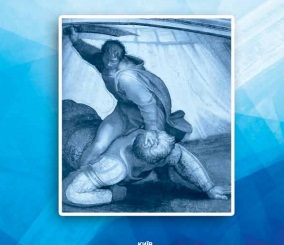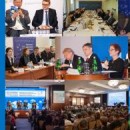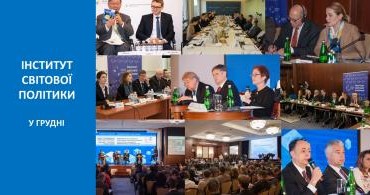IWP report analyzes security options for Ukraine based on five models: cooperation with NATO, regional security pacts, armed neutrality, bilateral security instruments, and the asymmetrical model.Authors:
Sergiy Solodkyy, Oleksiy Semeniy, Leonid Litra, Olena Betliy, Mykola Bielieskov, Olga Lymar, Yana Sayenko, Yaroslav Lytvynenko, Zachary A. Reeves
To read full text of the report
CONTENTS
Foreword
1. Asymmetric Security model
2. A security model based on a bilateral US-UA pact
3. The Partnership between NATO and Ukraine. Deeper but not Wider
4. Regional Security
5. Neutrality
Foreword
The Russian threat, inconsistent public policy, lack of political consolidation, institutional incapacity- the Institute of World Policy examined these dangers facing Ukraine back in 2013 in a paper called “Ukraine: Diagnostics of national (in)security.” The report was published just a few months before Russia’s aggression began in earnest. In many ways, that three-year-old study has remained very current even today—and the list of threats has only grown. The Rating Group’s latest survey, in October 2016, showed that most Ukrainians consider the conflict in Donbas the biggest issue facing Ukraine now.
Our current report, “Security in Transition,” serves to respond to this enormous list of threats. Our main goal here has been to analyze security options based on five models: cooperation with NATO, regional security pacts, armed neutrality, bilateral security instruments, and the asymmetrical model. Each of the five parts of this report is dedicated to one of these security options and analyzes each option according to these five aspects:
1) an assessment the current status of the model, especially in relation to Ukraine;
2) best examples of the application of the model worldwide;
3) the model’s drawbacks;
4) how well the model might work to restrain Russia’s aggression;
5) how probably the model might be implemented in the short (1-3 years), medium (3-5 years) and longer (5 and more years) terms;
6) recommendations.
Each section also contains a table summarizing the pros and cons of the analyzed model.
In any case, the Institute of World Policy has no doubt that Ukraine’s Euro-Atlantic integration is inevitable. Still, as analysts, we were obligated to consider other security formats, especially to be able to assess the pros and cons of each of the options during a transition period. For instance, an analysis of recent trends in the modified neutral model could be of interest both to other researchers and, in particular, for decision-makers. Indeed, the Institute’s research shows that neutral states are gradually becoming less and less neutral in the traditional sense of this model: such countries are aware of their vulnerability before a number of different threats, whether that be terrorism for neutral Turkmenistan or hybrid or even traditional war for neutral Finland and Sweden.
The asymmetrical model is a transitional model that fully permits the use of elements from any of the other security options analyzed in this report. It in no case stands in the way of Euro-Atlantic integration but, on the contrary, could prove to be an additional advantage through which Ukraine might become more interesting and valuable to the Alliance. As to Euro-Atlantic integration itself, Ukraine needs to stop looking for new formats and focus on implementing those programs that are currently on offer through its partnership with NATO. Deeper, not broader, integration must become the main motto for all those involved in carrying out the reform plans intended to move Ukraine towards the Alliance. For instance, Ukraine’s current Administration is insisting that the country be included in NATO’s Enhanced Opportunities Program, which currently includes Australia, Finland, Georgia, Jordan, and Sweden. Neither NATO itself, nor the countries participating in the program, can clearly explain how this format might be important for Ukraine. Nor is there any obvious evidence that this program might somehow bring Ukraine closer to the Alliance.
The Institute of World Policy is aware that the risk of a “grand bargain” among global players is always there, but it is not inevitable. In recent years, responses to Russia’s aggression were accompanied by countless ‘revelations’ about how international partners will or did cut deals with the Kremlin that were against Ukraine’s interests. But three years of growing military strength in Ukraine, the dedicated voluntarism of Ukrainians in support of their own army, and Ukraine’s active political and diplomatic engagement have ensured that this kind of conspiratorial scenario did not materialize. For Ukraine, a successful security model is, above all, the further reformation of its Armed Forces, but not only. It also means combating corruption, including in the defense sector, attracting investment to the economy, gaining the trust of ordinary citizens in their government, and establishing a government that is accountable before its citizenry.
Alyona Getmanchuk, Director, Institute of World Policy
This report was prepared within the “Think Tank Support Initiative” implemented by the International Renaissance Foundation (IRF) in partnership with Think Tank Fund (TTF) with financial support of the Embassy of Sweden in Ukraine. The contents are those of the Institute of World Policy.




Comments theme
Comments themeComments themeComments themeComments themeComments themeComments themeComments themeComments themeComments themeComments themeComments themeComments themeComments themeComments themeComments themeComments themeComments themeComments themeComments themeComments.